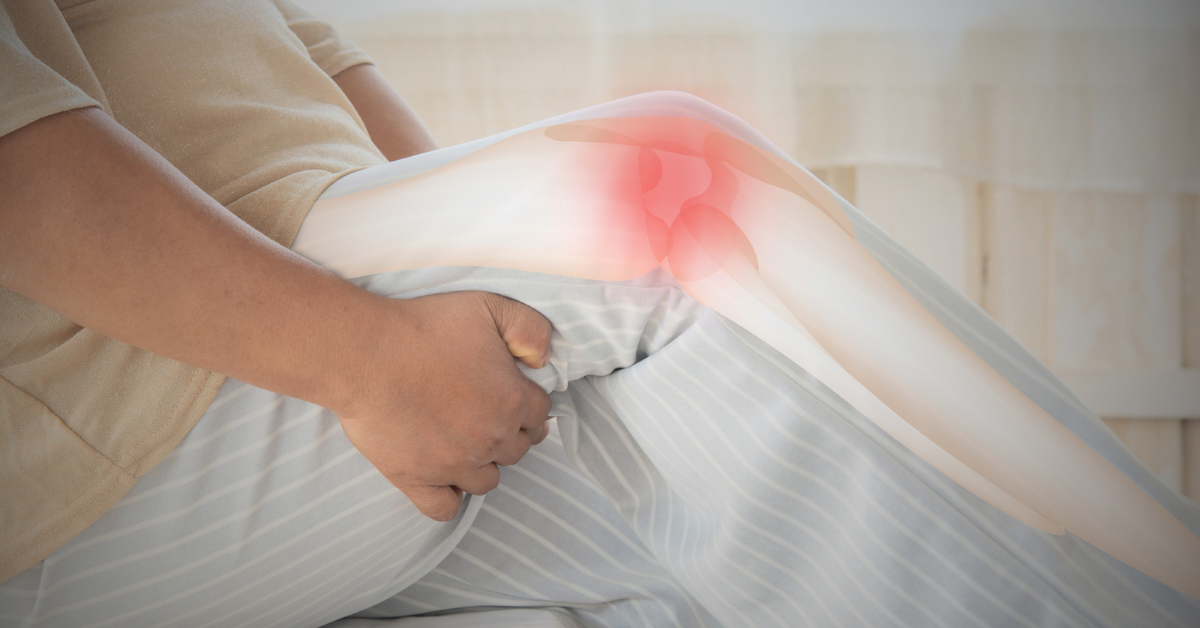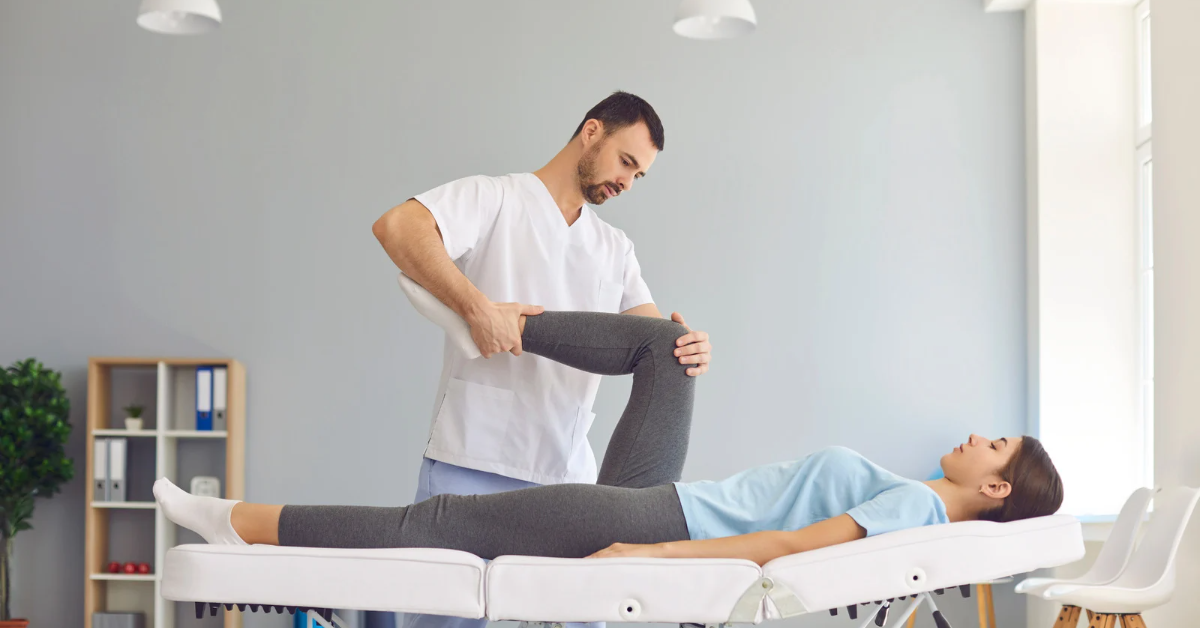Living with sharp stabbing knee pain can be a challenging experience. Whether it comes and goes or persists, it can significantly affect our daily activities and overall quality of life.
Pain flares are could be experienced while walking, simple household chores or even when sitting down. In this article, I will provide helpful suggestions and reasons for dealing with sharp stabbing pain in the knee.
Please note that while I aim to offer valuable advice, it’s important to consult with a healthcare professional for a proper diagnosis and personalized treatment plan.
Understanding Knee Pain
Sharp stabbing pain in the knee can have various causes.
It is commonly associated with conditions such as:
Meniscus Tears:
Meniscus tears refer to the damage or tearing of the rubbery cartilage discs in the knee joint. They are commonly caused by sudden twisting or direct impact to the knee, leading to pain, swelling, and difficulty in movement.
Ligament Injuries (such as ACL or PCL tears):
Ligament injuries, including ACL (anterior cruciate ligament) or PCL (posterior cruciate ligament) tears, occur when these crucial bands of tissue in the knee are overstretched or torn. Sports injuries or sudden movements can cause instability, pain, and limited mobility.
These two major ligaments are located inside the knee joint. The ACL runs diagonally in the center of the knee, while the PCL is positioned at the back of the knee. These ligaments play a crucial role in stabilizing the knee and preventing excessive forward and backward movement of the tibia (shinbone) in relation to the femur (thighbone). Injuries to the ACL or PCL can occur due to sudden twists, direct impact, or excessive force on the knee, leading to instability and compromised knee function.
Patellar Tendonitis:
Patellar tendonitis, also known as jumper’s knee, is an inflammation of the tendon connecting the kneecap (patella) to the shinbone. Repetitive jumping or excessive stress on the knee can lead to this condition, resulting in pain, swelling, and difficulty in activities involving the knee.
Osteoarthritis:
Osteoarthritis is a degenerative joint disease that commonly affects the knees. It occurs when the protective cartilage on the ends of bones wears down over time, leading to pain, stiffness, swelling, and reduced range of motion.
Bursitis:
Bursitis is the inflammation of the fluid-filled sacs (bursae) that cushion the joints. In the knee, excessive kneeling, repetitive motion, or direct trauma can cause bursitis, resulting in pain, swelling, and limited mobility.
IT Band Syndrome:
IT (iliotibial) band syndrome is a condition characterized by inflammation and irritation of the IT band, a thick band of tissue running along the outside of the thigh. Overuse, improper biomechanics, or muscle imbalances can lead to this syndrome, causing pain and tightness on the outer side of the knee. These conditions can be triggered by activities that involve sudden movements, overuse, or trauma to the knee joint. Symptoms may include sharp, intense pain, swelling, difficulty walking or bending the knee, and a feeling of instability.
Seek Professional Healthcare
If you experience sharp stabbing pain in your knee, it is essential to seek medical advice for an accurate diagnosis. A healthcare professional will evaluate your symptoms, medical history, and perform a physical examination. They may also order imaging tests, such as X-rays, MRI, or CT scans, to get a better understanding of the underlying cause.
Treatment Options
The treatment for sharp stabbing knee pain depends on the underlying cause and severity of the condition.
Non-surgical approaches are often the first line of treatment and may include:
- Rest and activity modification
- Physical therapy exercises to strengthen the surrounding muscles and improve joint stability
- Pain medications and anti-inflammatory drugs
- Assistive devices like braces or crutches for support
In some cases, surgical intervention may be necessary, especially for severe injuries or conditions that don’t respond to conservative treatments. Surgical options range from arthroscopic procedures to reconstructive surgeries, depending on the specific diagnosis. Implement some
Effective Strategies Relieve Burning Knee PainLifestyle Modifications
In addition to medical treatments, certain lifestyle modifications can help manage and prevent sharp stabbing knee pain.
Consider the following suggestions:
Maintaining a healthy weight: Excess weight puts added stress on the knee joints. By maintaining a healthy weight, you can reduce the strain on your knees and potentially alleviate pain.
Regular exercise: Engaging in regular low-impact exercises, such as swimming, cycling, or walking, can help strengthen the muscles around the knee joint. Strong muscles provide better support and stability, reducing the risk of injury.
Proper warm-up and stretching: Before engaging in physical activities or exercises, it’s important to warm up your muscles and stretch properly. This helps prepare your body for the activity and reduces the chances of strain or injury.
Using proper footwear: Ensure that you wear supportive and well-fitted shoes, especially during physical activities. Proper footwear provides cushioning and stability to your feet and can help alleviate knee pain.
Pain Management Techniques
Managing pain associated with sharp stabbing knee pain is crucial for improving daily functioning.
Consider the following pain management techniques:
- Cold and heat therapy: Applying cold packs or ice to the affected area can help reduce swelling and numb the pain. Heat therapy, such as using warm compresses or taking warm showers, can help relax muscles and ease discomfort.
- Over-the-counter pain relievers: Non-steroidal anti-inflammatory drugs (NSAIDs), such as ibuprofen or naproxen, can help reduce pain and inflammation. However, consult with a healthcare professional before taking any medication to ensure it’s suitable for you.
- Topical creams and ointments: There are topical creams and ointments available that can provide temporary pain relief. These products often contain ingredients like menthol or capsaicin, which create a cooling or warming sensation to alleviate discomfort.
Prevention Strategies
Preventing sharp stabbing knee pain involves taking proactive measures to protect your knees and reduce the risk of injuries. Consider the following prevention strategies:
- Warm-up and stretching: Always warm up your body and stretch before engaging in physical activities or exercise. This helps prepare your muscles for movement and reduces the risk of strains or injuries.
- Proper technique: When participating in sports or engaging in physical activities, ensure you use proper technique and form. Incorrect movements can put excessive stress on your knee joints, leading to pain and injuries.
- Protective gear and equipment: If you’re involved in activities that pose a higher risk of knee injuries, such as contact sports or high-impact exercises, wear appropriate protective gear. This can include knee braces, padding, or helmets, depending on the activity.
Rehabilitation and Recovery
For individuals who have undergone surgical intervention or are recovering from a knee injury, rehabilitation plays a vital role in the recovery process. Consider the following rehabilitation and recovery measures:
- Physical therapy: A physical therapist can design a customized rehabilitation program to help regain strength, flexibility, and stability in the knee joint. This may include exercises, stretches, and techniques to improve mobility and reduce pain.
- Gradual return to activity: It’s important to follow your healthcare professional’s guidelines and gradually return to your regular activities or sports. Rushing the process can increase the risk of reinjury.
Coping with Emotional Challenges
Dealing with sharp stabbing knee pain can take a toll on your emotional well-being.
It’s important to address the emotional challenges that may arise and seek support when needed. Consider the following strategies:
- Seek emotional support: Talk to your friends, family, or a therapist about your feelings and experiences. Sharing your emotions can provide relief and help you cope with the challenges.
- Practice stress management techniques: Engage in stress-relieving activities such as meditation, deep breathing
Stay positive and set realistic expectations: Maintaining a positive mindset can greatly influence your ability to cope with pain. Set realistic expectations for your recovery and focus on the progress you make along the way.
When to Seek Medical Help
While self-care measures and lifestyle modifications can be helpful, there are instances when it’s crucial to seek immediate medical attention for sharp stabbing knee pain. Pay attention to the following red flags:
- Sudden and severe pain that doesn’t improve with rest or self-care measures.
- Inability to bear weight on the affected leg.
- Visible deformity or swelling in the knee joint.
- Limited range of motion in the knee.
- Numbness or tingling sensation in the leg or foot.
- Signs of infection, such as fever, redness, warmth, or discharge from the knee.
If you experience any of these symptoms or have concerns about your condition, consult with a healthcare professional promptly.
Alternative Therapies for healing Sharp Stabbing Knee Pain
In addition to conventional treatments, some individuals find relief from sharp stabbing knee pain through alternative therapies. These complementary approaches can be used in conjunction with medical advice and may include:
- Acupuncture: This traditional Chinese medicine technique involves inserting thin needles into specific points on the body to help alleviate pain and promote healing.
- Chiropractic care: Chiropractors use manual adjustments and other techniques to restore proper alignment and function of the musculoskeletal system, potentially reducing knee pain.
- Herbal remedies and supplements: Some herbal remedies and dietary supplements, such as turmeric, ginger, or glucosamine, are believed to have anti-inflammatory and pain-relieving properties. However, consult with a healthcare professional before trying any new supplements.
Case Studies
Real-life examples of individuals who have dealt with sharp stabbing knee pain can provide valuable insights and inspiration.
Explore the following case studies:
Sarah’s Story:
Overcoming Knee Pain through Physical Therapy
Sarah’s journey from debilitating knee pain to recovery with the help of physical therapy and determination.

Mark’s Experience:
Surgical Intervention for Meniscus Tear while playing football.
Mark’s experience with sharp stabbing knee pain and the successful surgical treatment of his meniscus tear.

Lisa’s Triumph:
From Chronic Knee Pain to Running Marathons
Lisa’s story of overcoming chronic knee pain through a comprehensive treatment plan and regaining an active lifestyle.
John’s Journey:
How Lifestyle Modifications Improved Knee Health
John’s journey of making lifestyle changes, including weight loss and exercise, to alleviate sharp stabbing knee pain and improve his overall knee health.
Conclusion
Living with sharp stabbing knee pain can be challenging, but with the right approach, it is possible to manage and find relief. By understanding the causes, seeking appropriate medical care, implementing lifestyle modifications, and exploring various treatment options, you can take steps towards alleviating pain and improving your knee health.
Remember to consult with a healthcare professional for a proper diagnosis and personalized treatment plan.
FAQ’s
1. What are the main causes of sharp stabbing pain in the knee?
Sharp stabbing knee pain can be caused by various conditions, including meniscus tears, ligament injuries, osteoarthritis, or bursitis.
2. How can I manage sharp stabbing knee pain at home?
Home management of sharp stabbing knee pain can include rest, applying ice or heat, over-the-counter pain relievers, and gentle exercises recommended by a healthcare professional. However, it’s important to consult with a healthcare professional for a proper diagnosis and personalized treatment plan.
3. When should I consider surgery for sharp stabbing knee pain?
A: Surgery may be considered for sharp stabbing knee pain when conservative treatments have failed to provide relief or in cases of severe injuries or conditions. A healthcare professional will evaluate your specific situation and determine the appropriate treatment approach.
4. Can physical therapy help with sharp stabbing knee pain?
Yes, physical therapy can be an effective treatment option for sharp stabbing knee pain. A physical therapist can design a customized program to strengthen the muscles around the knee, improve joint stability, and alleviate pain.
5. Are there any natural remedies for sharp stabbing knee pain?
Some individuals find relief from sharp stabbing knee pain through natural remedies such as applying topical creams with natural ingredients, using herbal supplements with anti-inflammatory properties, or trying acupuncture. However, it’s important to consult with a healthcare professional before trying any new remedies to ensure they are safe and suitable for you.





![Urban Health Hive]](https://urbanhealthhive.com/wp-content/uploads/2023/05/cropped-cropped-Health_Logo.png)



